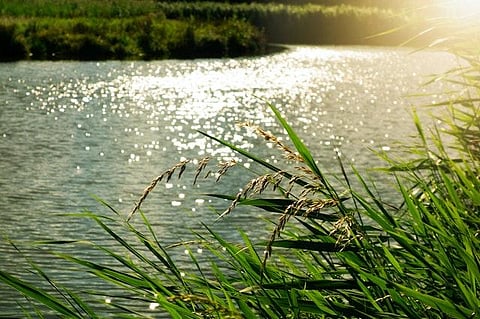

THOOTHUKUDI: In the wake of invasive species threatening water bodies, researchers have cautioned that aquaculture and ornamental fish farms culturing invasive species will become a 'bridgehead' for secondary introduction of the exotic fish species to remote water bodies. Invasive exotic fish species such as South American Suckermouth armoured catfish and African catfish have been largely found in the Thamirabarani wetlands, becoming a major threat for native fishes of the freshwater wetland ecosystem.
The term 'bridgehead' refers to an army of soldiers in a base camp close to a bridge before gaining entry into enemy territory. Biologists have adopted the term 'bridgehead' to explain the same phenomenon for the dissemination of invasive alien species to Indian water bodies, says a recently published research article titled 'Do Aquaculture and Ornamental Fish Culturing Sites Act as a Bridgehead for Alien Fish Invasion in Indian Wetlands? A Review' by S Sandilyan.
The study suspects that unchecked operations of inland aquaculture ponds stocking and culturing the alien species to meet the demands of the ornamental and food market has led to this large-scale invasion. Speaking to TNIE, Dr S Sandilyan said the bridgehead population is expected to have acquired new traits and got acclimated to the tropical climate, pollution, and disease resilience.
Jeya Ganesh of Sakkammalpuram, a fresh water fishing hobbyist, said the unchecked invasion of alien species has abruptly reduced fish production. Ganesh had leased the Sakkammalpuram tank for fishing after paying the required amount to the Pathrakali Amman temple. The net fish catch, which gave him as much as Rs 1 lakh in 2022, has plummeted to Rs 36,000 this year. He attributed the spiralling number of exotic South American Suckermouth armoured catfish (tank cleaner) and African catfish (theli) as the reason for the slump.
The increasing number of alien species also had an adverse effect on the population of native fishes. He caught 2 tonnes of Andhra Silabi, 700 kgs of Panni Kendai, and 300 kgs of Pannichethai last year. The numbers have been reduced to 900 kg, 5 kg, and 30 kg respectively this year. Keluthi fish, which he caught about 350 kg last year, also saw a dip. "The counts of other native varieties found abundantly in the Sakkamalpuram tank, like Viral, Aral, Vilangu, Uluvai, Pull Kendai have been drastically reduced. The indigenous species like Kulathu Vazhai and Nattu theli have disappeared," Ganesh said.
Ganesh said that catfish and suckermouth catfish may be eating the eggs and fingerlings of the native breeds. The water hyacinths present in the Thamirabarani water bodies are a safe haven for these exotic species to thrive, he opined.
Jude Paramjothi, a nature enthusiast attached to 'Namma Thoothukudi", travels to various water bodies of river Thamirabrani. He said the African catfish and tank cleaners are predominant. "Although they have reduced the population of many indigenous species of river Thamirabarani, there is not proper study on the subject," he said.
Dr C Thomson Jacob, a former biodiversity policy consultant, CEBPOL told TNIE that invasion of the alien species in the inland waters endangers the security of food, nutrition and livelihood of the public who depend on inland resources. A national and state level policy to control the spread of invasive alien species is the need of the hour, he said.